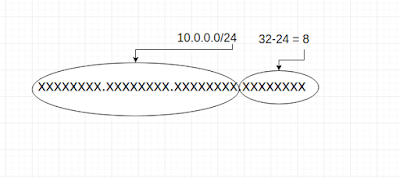below sample curl command will return client id and secret
curl -k -H "Content-Type: application/json" -X POST -d '{"owner":"admin","clientName":"admin_emm","grantType":"refresh_token password client_credentials","tokenScope":"prod"}' https://localhost:9443/dynamic-client-web/register
This will return a response like below
{"client_secret":"YCnfi_jp9Tso0qyRcbGxaQnYctga","callback_url":null,"client_id":"xJvKvUHNYqfK1MeQ_VybtBfF5MAa","client_name":"admin_admin_emm"}
Use the client id and secret by encoding using base64 to generate access token using below command
curl -k -d "grant_type=password&username=admin&password=admin&scope=default " -H "Authorization: Basic eEp2S3ZVSE5ZcWZLMU1lUV9WeWJ0QmZGNU1BYTpZQ25maV9qcDlUc28wcXlSY2JHeGFRblljdGdh" -H "Content-Type: application/x-www-form-urlencoded" https://localhost:9443/oauth2/token
This will return a response like below
{"scope":"default","token_type":"Bearer","expires_in":3600,"refresh_token":"97c3c78b8c2c4e2ccd5424ffc7259d3e","access_token":"60a810d5baa3361af9aa5e6d8cf76ea9"}
Use the generated access token to call the policy publishing API.
Below is a sample curl command to create black list policy
curl -X POST -H "Content-Type: application/json" -H "Authorization: Bearer 60a810d5baa3361af9aa5e6d8cf76ea9" -d @'operation.json' -k -v https://localhost:9443/mdm-admin/policies/active-policy
Resource path : /active-policy
URL : /mdm-admin/policies/active-policy
HTTP Method : POST
Request/Response format : application/json
Sample payload in operation.json is
{
"policyName": "black list",
"description": "",
"compliance": "enforce",
"ownershipType": "ANY",
"profile": {
"profileName": "black list",
"deviceType": {
"id": 1
},
"profileFeaturesList": [
{
"featureCode": "APP-RESTRICTION",
"deviceTypeId": 1,
"content": {
"restriction-type": "black-list",
"restricted-applications": [
{
"appName": "app name1",
"packageName": "package1"
},
{
"appName": "app name2",
"packageName": "package2"
},
{
"appName": "app name3",
"packageName": "package3"
}
]
}
}
]
},
"roles": [
"ANY"
]
}
"policyName": "black list",
"description": "",
"compliance": "enforce",
"ownershipType": "ANY",
"profile": {
"profileName": "black list",
"deviceType": {
"id": 1
},
"profileFeaturesList": [
{
"featureCode": "APP-RESTRICTION",
"deviceTypeId": 1,
"content": {
"restriction-type": "black-list",
"restricted-applications": [
{
"appName": "app name1",
"packageName": "package1"
},
{
"appName": "app name2",
"packageName": "package2"
},
{
"appName": "app name3",
"packageName": "package3"
}
]
}
}
]
},
"roles": [
"ANY"
]
}
After making above curl command you will get successful response as below
* Trying 127.0.0.1...
* Connected to localhost (127.0.0.1) port 9443 (#0)
* TLS 1.2 connection using TLS_ECDHE_RSA_WITH_AES_128_CBC_SHA256
* Server certificate: localhost
> POST /mdm-admin/policies/active-policy HTTP/1.1
> Host: localhost:9443
> User-Agent: curl/7.43.0
> Accept: */*
> Content-Type: application/json
> Authorization: Bearer 60a810d5baa3361af9aa5e6d8cf76ea9
> Content-Length: 460
>
* upload completely sent off: 460 out of 460 bytes
< HTTP/1.1 200 OK
< Date: Fri, 29 Apr 2016 11:19:39 GMT
< Content-Type: application/json
< Content-Length: 76
< Server: WSO2 Carbon Server
<
* Connection #0 to host localhost left intact
{"statusCode":201,"messageFromServer":"Policy has been added successfully."}
Created policy bundle will show in policy management window of EMM UI.
Created policy bundle will show in policy management window of EMM UI.














